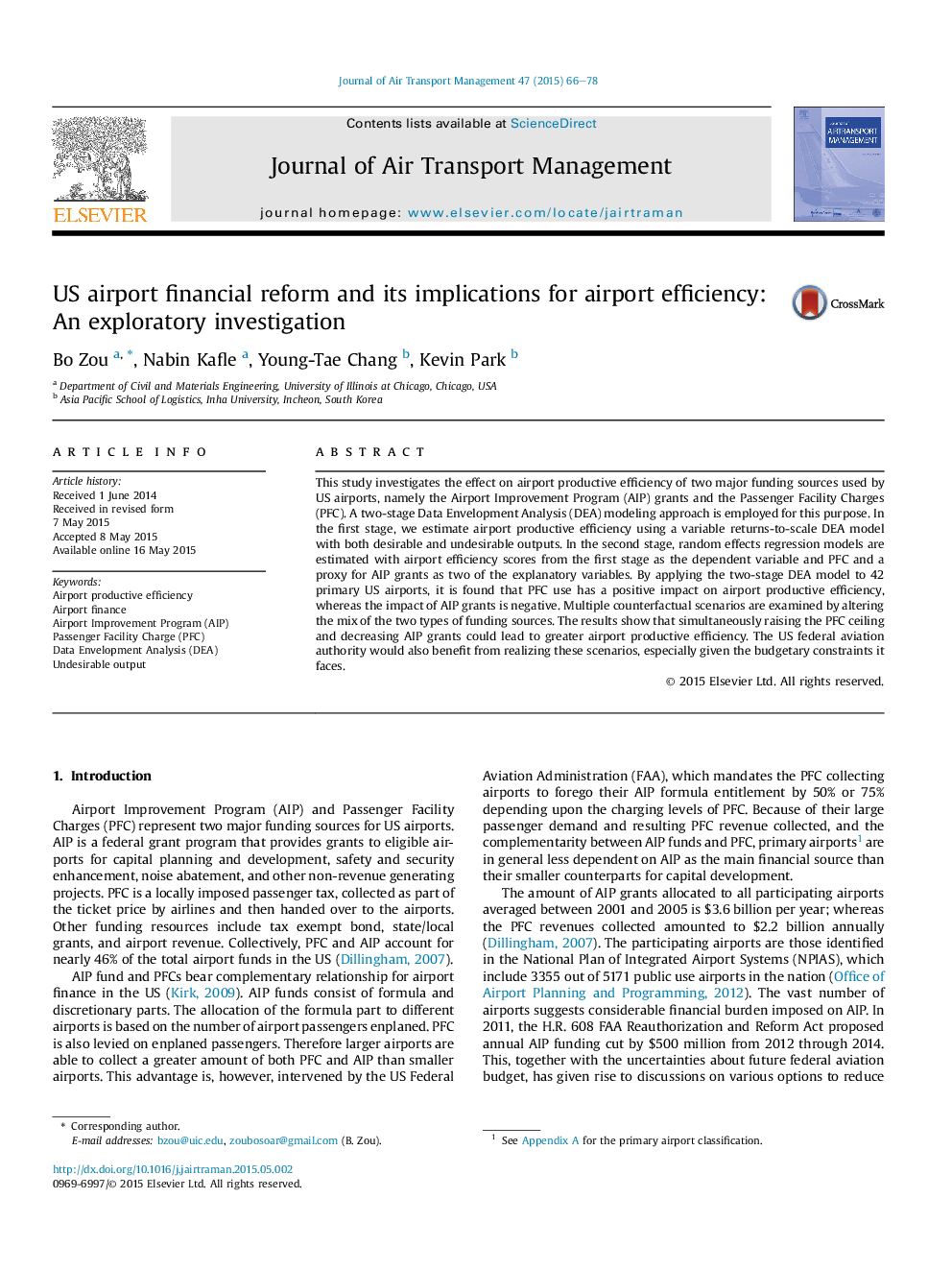| Article ID | Journal | Published Year | Pages | File Type |
|---|---|---|---|---|
| 7435704 | Journal of Air Transport Management | 2015 | 13 Pages |
Abstract
This study investigates the effect on airport productive efficiency of two major funding sources used by US airports, namely the Airport Improvement Program (AIP) grants and the Passenger Facility Charges (PFC). A two-stage Data Envelopment Analysis (DEA) modeling approach is employed for this purpose. In the first stage, we estimate airport productive efficiency using a variable returns-to-scale DEA model with both desirable and undesirable outputs. In the second stage, random effects regression models are estimated with airport efficiency scores from the first stage as the dependent variable and PFC and a proxy for AIP grants as two of the explanatory variables. By applying the two-stage DEA model to 42 primary US airports, it is found that PFC use has a positive impact on airport productive efficiency, whereas the impact of AIP grants is negative. Multiple counterfactual scenarios are examined by altering the mix of the two types of funding sources. The results show that simultaneously raising the PFC ceiling and decreasing AIP grants could lead to greater airport productive efficiency. The US federal aviation authority would also benefit from realizing these scenarios, especially given the budgetary constraints it faces.
Related Topics
Social Sciences and Humanities
Business, Management and Accounting
Strategy and Management
Authors
Bo Zou, Nabin Kafle, Young-Tae Chang, Kevin Park,
